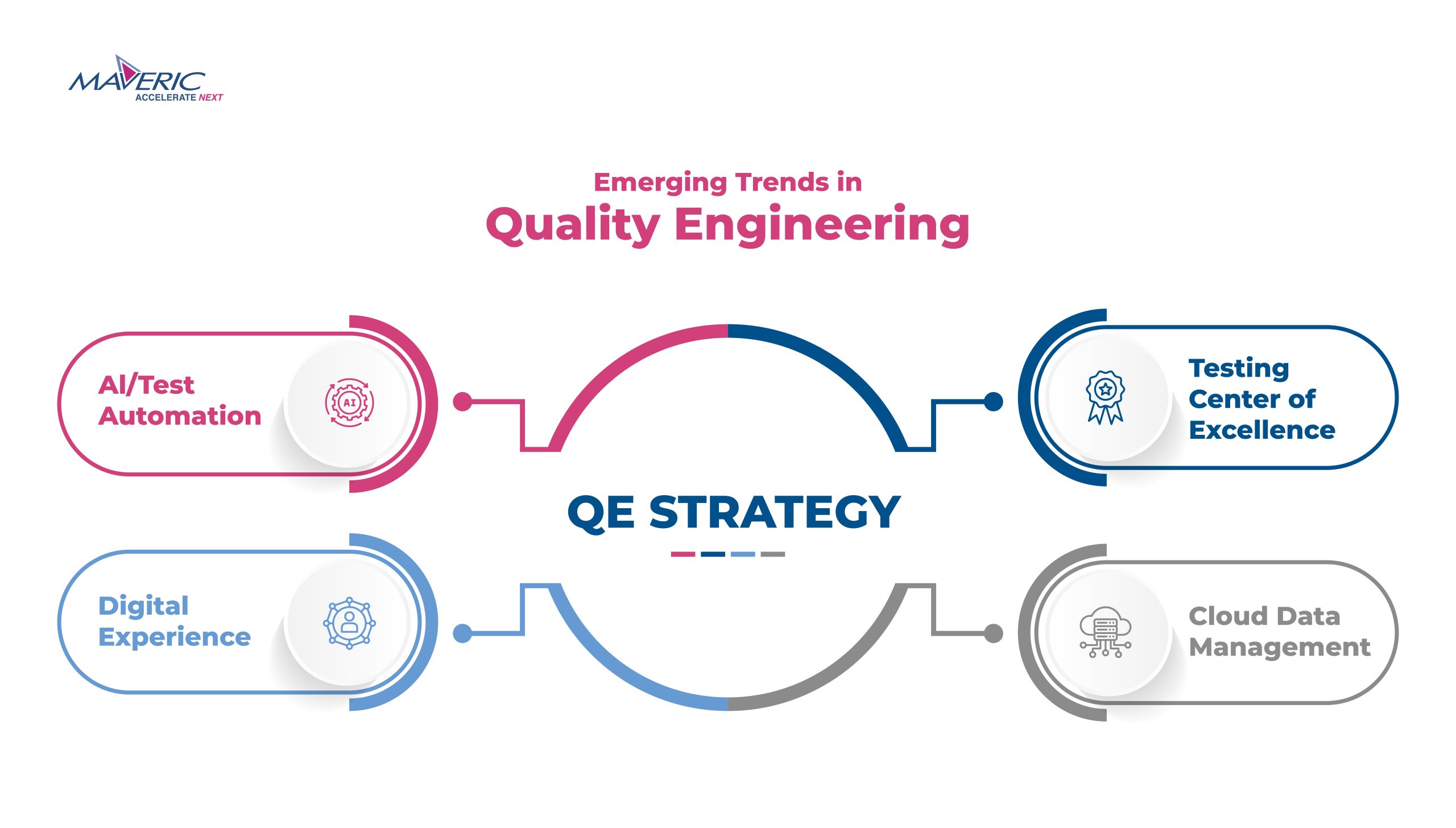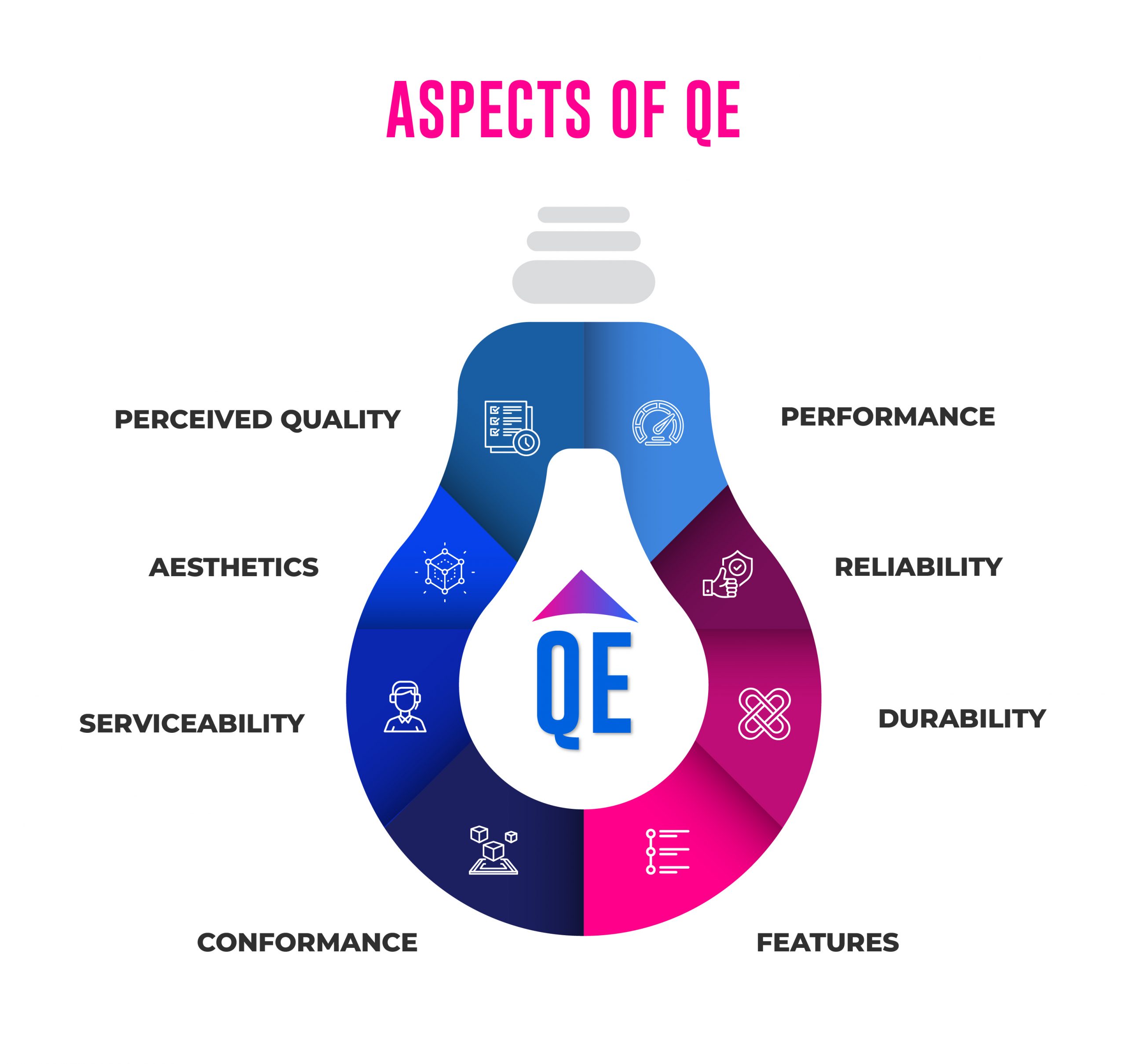Building Customer Trust in 2024 through Quality Engineering Services

As digital experiences define a company’s reputation, quality engineering services are critical for building customer trust. Glitchy software, security breaches, and frustrating user experiences can quickly erode brand loyalty and undermine business growth. This is particularly evident within the banking industry, where customers expect seamless, secure, and reliable interactions across digital platforms.
Beyond Functionality: The Essential Role of Quality
Quality engineering goes far beyond ensuring that software merely works. It encompasses a comprehensive approach that targets performance, user-friendliness, security, and the ability to adapt to evolving customer needs. Investing in digital assurance ensures that software not only meets expectations but exceeds them, fostering lasting customer confidence.
Maveric Systems understands this dynamic. As a quality engineering specialist in the banking sector, Maveric’s approach aligns with their 3Cs advantages of Contextualization, Competence, and Commitment. Maveric grasp the industry’s unique challenges, possess the technical expertise to implement robust quality assurance practices and remain dedicated to helping banks deliver exceptional user experiences.
The Cost of Poor Quality
The financial repercussions of neglecting quality can be steep. A recent report by PwC revealed that software failures cost businesses a staggering $2 trillion globally in 2023. For customer-facing applications, the impact is multiplied as trust diminishes. In banking, customers may switch providers or hesitate to adopt new digital services if they perceive them as unreliable or risky.
Quality Engineering: A Foundation for Trust
Let’s explore how quality engineering services specifically build customer trust:
- Reliability Thorough testing across various scenarios and devices helps catch bugs before they cause outages or frustrating customer experiences. This bolsters customers’ faith in the bank’s ability to deliver seamless digital services.
- Security: Rigorous security testing, including vulnerability scanning and penetration testing, safeguards sensitive customer data. Transparency around security practices and proactive communication about security measures go a long way in building trust.
- Exceptional User Experience (UX): Performance optimization, intuitive design, and accessibility testing ensure that digital banking platforms are user-friendly and enjoyable.
- Agility: Implementing automated testing and continuous delivery pipelines allows banks to respond quickly to bugs, security threats, or changing market needs. This proactive approach demonstrates a commitment to maintaining consistently high digital standards.
Banking on Quality – Recent Trends
Recent banking industry trends reflect the growing importance of quality engineering. A Gartner survey shows that over 70% of banks plan to significantly increase their investment in digital assurance services over the next two years. This highlights the recognition that exceptional digital experiences are not just ‘nice to have’ but a cornerstone of business strategy.
Strategic Ways Forward
Here’s how banks can effectively leverage quality engineering services to solidify customer trust:
- Quality as a Mindset: Embed quality standards and testing throughout the software development lifecycle, transforming them into a foundational commitment rather than an afterthought.
- Customer Centricity: Prioritize testing focusing on real-world customer scenarios and pain points, going beyond basic functionality to ensure genuine user satisfaction.
- Choose the Right Partner: Seek a quality engineering partner like Maveric Systems, which specializes in the banking domain and has a proven track record of delivering contextualized, high-quality solutions.
Conclusion
In 2024, quality engineering will be a non-negotiable investment for banks looking to forge lasting customer relationships. By proactively addressing issues like reliability, security, and exceptional user experience, banks can build trust that withstands market disruptions and fuels long-term success. In a future driven by digital experiences, banking on quality is banking on the future itself.
About Maveric Systems
Established in 2000, Maveric Systems is a niche, domain-led, BankTech specialist, transforming retail, corporate, and wealth management digital ecosystems. Our 2600+ specialists use proven solutions and frameworks to address formidable CXO challenges across regulatory compliance, customer experience, wealth management and CloudDevSecOps.
Our services and competencies across data, digital, core banking and quality engineering helps global and regional banking leaders as well as Fintechs solve next-gen business challenges through emerging technology. Our global presence spans across 3 continents with regional delivery capabilities in Amsterdam, Bengaluru, Chennai, Dallas, Dubai, London, New Jersey, Pune, Riyadh, Singapore and Warsaw. Our inherent banking domain expertise, a customer-intimacy-led delivery model, and differentiated talent with layered competency – deep domain and tech leadership, supported by a culture of ownership, energy, and commitment to customer success, make us the technology partner of choice for our customers.
View

 Partnering with domain experts in Quality Engineering like
Partnering with domain experts in Quality Engineering like 










